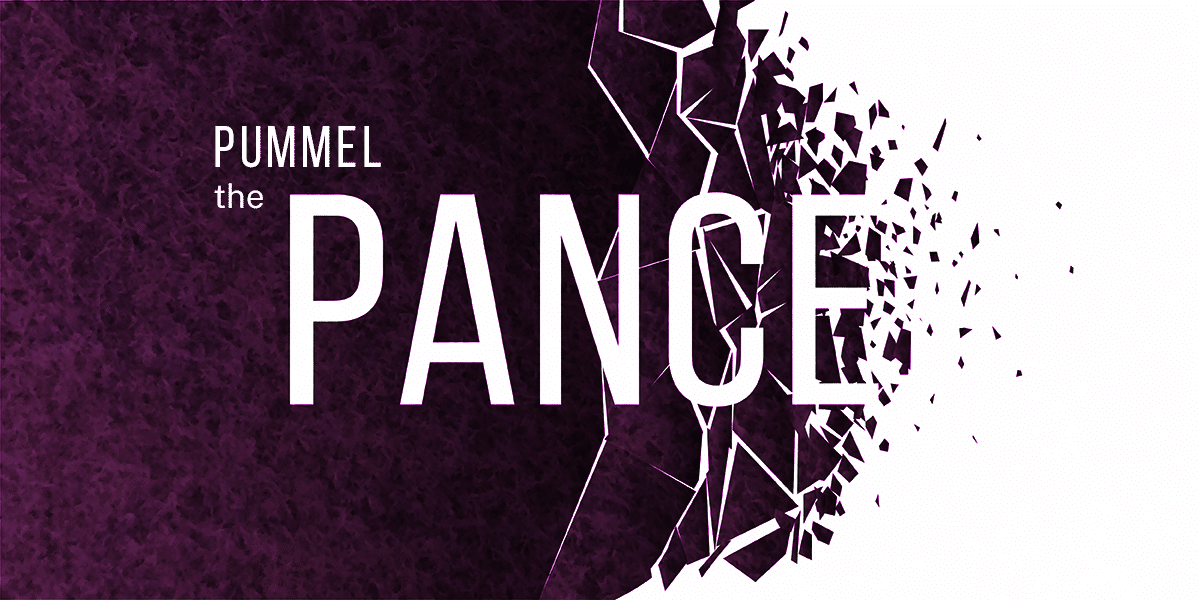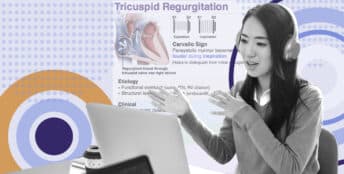How to Pass the PANCE on the First Try

I recently found out that I passed my PANCE exam on the first attempt! Studying for the PANCE exam doesn’t begin one month or even six months in advance. It begins the day you start PA school. Everything you learn in didactic classes and during clinical year is all preparation for the PANCE exam.
When you are studying in PA school, make it a point to not just study to pass each individual test. Study in a way that you seek to understand the material and not just commit it to short-term memory. This will be very helpful when it is time for PANCE review, so you don’t have to completely relearn all the material you learned during PA school.
Create your study plan
The first thing you should do when studying for the PANCE is to come up with a plan for how you are going to get through all the material. Specifically, I made a plan for the month before my PANCE exam. I created a spreadsheet in Excel, planning out specifically what material I was going to cover each day. I used the PANCE blueprint from the NCCPA website to guide my plan.
At the beginning of the month, I started with the lower percentage sections on the blueprint (currently Hematology and Infectious Disease) and worked my way up to the highest percentage sections (currently Pulmonology and Cardiology). That way, the highest-percentage topics would be fresh on my mind when taking my PANCE.
I tried to set aside 6–8 hours each day for uninterrupted studying. I spent 1 day on the lower percentage sections and 2–3 days on the higher percentage sections. (Disclaimer: Infectious Disease is actually a bigger percentage than it looks like on the blueprint because infectious disease topics are dispersed throughout other topic sections. Keep in mind as well that in the current blueprint, Pharmacology is 18%, so knowing medications is important.)
While group studying can be very useful, you have to be careful with which friends you choose to study with. Make sure expectations are set from the beginning about focusing on the topic material and not getting distracted talking about other things.
I got out of my house to study and spent the day at local coffee shops. I tried to alternate which days I went where, so I would have new scenery. I usually studied alone, but for some of the topic sections that were more challenging for me, I met up with two friends.
While group studying can be very useful, you have to be careful with which friends you choose to study with. Make sure expectations are set from the beginning about focusing on the topic material and not getting distracted talking about other things. The couple of days I studied with friends, we agreed to review the section of A Comprehensive Review individually first and then discuss the important points together as a group. We would also add anything else we thought was important about the topic that the book had not mentioned. I found these couple days helpful for the more challenging topics, but, overall, I found that I was most productive studying individually.
Follow your study plan
The main resources I used to prepare were Rosh Review, PANCE Prep Pearls by Dwayne A. Williams, A Comprehensive Review for the Certification and Recertification Examinations for Physician Assistants Sixth Edition by Claire Williams, The Final Step by Brian Wallace, and PA Prep Essentials Flashcards from CME4Life. I also attended a CME4Life three-day PANCE review course the month before my scheduled PANCE exam.
Three months before the PANCE : I studied topics that had been my weak areas. I identified my weak areas by looking at the score report from my recent PACKRAT exam. The topics I scored the lowest on were where I spent my time studying during this period.
One month before the PANCE: I took the CME4Life three-day PANCE review course. In my opinion, this was a great time for a review course because it helped kick-start my serious studying. More information regarding this review course can be found below.
After completing the review course, I started using my study calendar for all the days of the month leading up to my exam. For each topic section, I would read the relevant section in A Comprehensive Review. At the end of each chapter, I would complete the 12 practice questions to check my understanding. Next, I would read the relevant section in PANCE Prep Pearls. Then, I would study Rosh Review questions specific to that topic. For example, I would generate a test on Rosh Review in “study mode” with 150 Cardiology questions when I was studying that specialty. Finally, I would review the relevant section in The Final Step. More information about each individual study resource is outlined in more detail below.
Three days before the PANCE: The last two days of studying I reserved for quick, high-yield topic review. The two resources I used for this were The Final Step and A Prep Essentials Flashcards from CME4Life. The Final Step has a portion at the end of the book with all sections combined together. PA Prep Essentials Flashcards are 750 flashcards with high-yield information for the PANCE. These were the only two resources I used on my last two study days.
The day before my scheduled PANCE exam, I took the day off.
The day before the PANCE: I took the day off. I went outside, exercised, and went to lunch with some friends. It is very important to let your brain rest the day before the exam and have some time to allow all the information to sink in. It is crucial to get good sleep the night before the exam, not more or less than your body is used to, though.
Show up to the PANCE prepared
Day of the exam: The PANCE exam is taken at Pearson VUE testing centers. Keep to your normal morning routine the day of the exam. Do not try to study or cram information into your brain the day of the exam. Eat the breakfast that you usually eat, and drink coffee if you normally drink coffee. This isn’t the day to try something new.
You need two forms of ID to get into the testing center. I also brought a couple of snacks to eat during break times. You have five 45-minute sections and three breaks during your 300-question PANCE exam. This means that you can take a break between every section, except for one. You will have to do two sections back to back at some point and all the other sections you can take a break in between. I chose to complete my first two sections back to back.
Confidence is key the day of the exam. You have to remember that you have studied hard and prepared the best you could for the exam. I ended up finding out my score exactly one week after I took it.
Resource summary
Rosh Review: I began using Rosh Review during my clinical year of PA school and used it for my rotation exams. Many of my classmates purchased it together and received a discounted price. It is a large question bank that provides you with detailed feedback for each question. Many questions have visuals as well, outlining the “must-know” aspects of each condition.
You can select which body system or specialty you want questions to be generated from specifically. Rosh Review also offers practice tests for each specific rotation exam for an additional fee. When it came time to study for my PANCE exam, I used this resource to study each topic section, as I mentioned above. This was the only resource I used for practice questions, and I found it to be extremely helpful.
PANCE Prep Pearls: I used this book throughout my entire time in PA school. It was really helpful when it came to the month before the exam because it outlined all the topics from the blueprint in concise but detailed format. Some sections of this book are more detailed than I felt necessary for the PANCE, but for many topics, it provided just the right amount of detail. It is written in a way that doesn’t make you feel like you are reading a textbook, but you are still getting the necessary information.
A Comprehensive Review for the Certification and Recertification Examinations for Physician Assistants Sixth Edition: I bought this book a couple of months before I took my PANCE exam. This was the resource I would start reading when beginning a new topic section. This book is written in textbook format with minimal pictures. It does a great job of explaining topics in a way that helps you understand the root causes, so you are not just memorizing the information. There are figures and diagrams as well to help compare similar conditions and outline algorithms for diagnosis and treatments. This book may give more detail than you need for the PANCE exam, but it presents the material in a way you will actually remember in the long run.
The Final Step: This resource is great for quick recall on high-yield material and “buzzwords.” Part A is broken down into chapters by topic, like Cardiology, Pulmonology, Gastrointestinal, etc. I would review the relevant chapters in Part A during each of my topic study days. This book’s layout is similar to flashcards, with a question in the left column and the answer in the right column. The final two study days before my exam I used Part B, which was a compilation of all the chapters from Part A mixed together. This was great for quick recall of the important high-yield topics.
I began using Rosh Review during my clinical year of PA school. Many of my classmates purchased it together and received a discounted price. It is a large question bank that provides you with detailed feedback for each question. Many questions have pictorials as well, outlining the “must-know” aspects of each condition.
CME4LIFE PA Prep Essential Flashcards: I used these 750 flashcards during the final two days of my studying. These were included with my purchase of the CME4Life three-day review course. A 100-question flashcard test was also included with my purchase, which gave me an idea whether or not I had a good understanding of the flashcard material. These flashcards were also a great resource for quick recall of high-yield information.
CME4LIFE Three-Day PANCE Review Course: This course was offered on-site at my PA program. John Bielinski came to our campus to run the course. It cost $240 if 50 of my classmates signed up and was great! John Bielinski is very engaging and kept my attention throughout the entire course. He teaches in a nonconventional way that will help the information stick and is different from the way you were taught the information in PA school. Instead of just reading off a slide show, he is very interactive and has great ways for you to remember important information.
We only got through a portion of the blueprint during the three days, however. We got through the sections of Cardiology, Pulmonology, Gastrointestinal, Musculoskeletal, and Infectious Disease. The day I was taking the PANCE, I found myself recalling several memory cues he taught us. He also gave great real-world advice about being a PA, which I am very thankful for as a new graduate. Overall, for the price of the course, I was very happy with the content provided.
Best of luck to you studying for your PANCE exam!
Interested in joining a live course for accelerated PANCE review? The 4-day Rosh Review PANCE Review Course is now open for enrollment to help you pass the exam on the first take!
Or, find out more information about Rosh Review’s PANCE review Qbank.
Pummel the PANCE Series shares the experiences, insights, and perspectives of PA students preparing for the PANCE. The goal of the series is to provide you with actionable information and key takeaways to help you not only prepare for but to excel on the PANCE.
Rosh Review, LLC is not sponsored or endorsed by, or affiliated with, the National Commission on Certification of Physician Assistants (NCCPA). All trademarks are the property of their respective owners.
Get Free Access and Join Thousands of Happy Learners
FAQs
Get a little more clarification
For more information, read Everything You Need to Know for the PANCE Exam and the Top Questions about Qbanks for PA Students, the PANCE, & Rotation Exams.
- How to Boost Your PANCE Score, which teaches you how to determine your "unknown unknowns" and what kinds of grammatical mistakes to look for on the exam
- The Pummel the PANCE series, which includes four articles by PA-Cs detailing their PANCE study plans, favorite resources, and strategies
- The PANCE Study Plan They Don't Teach You in PA School, which covers the tips Adam Rosh gave a PA student who didn't pass the PANCE four times (and she passed after using this strategy!)
- The Rosh Reveal vodcast, where Adam Rosh teaches you the thought process behind answering board exam questions
- Adam Rosh’s interview by Jessica Veale, PA-S, on her podcast The PA Process discussing test-taking strategies, overcoming failure, and building confidence





Comments (0)